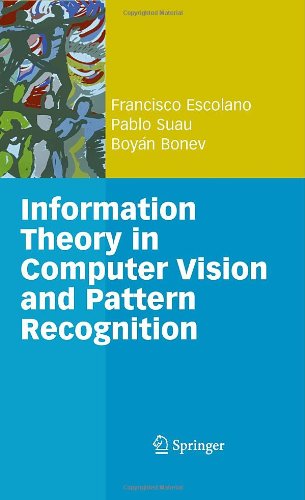

Most ebook files are in PDF format, so you can easily read them using various software such as Foxit Reader or directly on the Google Chrome browser.
Some ebook files are released by publishers in other formats such as .awz, .mobi, .epub, .fb2, etc. You may need to install specific software to read these formats on mobile/PC, such as Calibre.
Please read the tutorial at this link: https://ebookbell.com/faq
We offer FREE conversion to the popular formats you request; however, this may take some time. Therefore, right after payment, please email us, and we will try to provide the service as quickly as possible.
For some exceptional file formats or broken links (if any), please refrain from opening any disputes. Instead, email us first, and we will try to assist within a maximum of 6 hours.
EbookBell Team

4.8
104 reviewsInformation Theory (IT) can be highly effective for formulating and designing algorithmic solutions to many problems in Computer Vision and Pattern Recognition (CVPR).
This text introduces and explores the measures, principles, theories, and entropy estimators from IT underlying modern CVPR algorithms, providing comprehensive coverage of the subject through an incremental complexity approach. The authors formulate the main CVPR problems and present the most representative algorithms. In addition, they highlight interesting connections between elements of IT when applied to different problems, leading to the development of a basic research roadmap (the ITinCVPR tube). The result is a novel tool, unique in its conception, both for CVPR and IT researchers, which is intended to contribute as much as possible to a cross-fertilization of both areas.
Topics and features:
A must-read not only for researchers in CVPR-IT, but also for the wider CVPR community, this text is also suitable for a one semester IT-based course in CVPR.
---
Information theory has found widespread use in modern computer vision, and provides one of the most powerful current paradigms in the field. To date, though, there has been no text that focusses on the needs of the vision or pattern recognition practitioner who wishes to find a concise reference to the subject. This text elegantly fills this gap in the literature. The approach is rigorous, yet lucid and furnished with copious real world examples.
Professor Edwin Hancock,
Head CVPR Group and Chair Department Research Committee,
Department of Computer Science, University of York
---
Far from being a shotgun wedding or arranged marriage between information theory and image analysis, this book succeeds at explicating just why these two areas are made for each other.
Associate Professor Anand Rangarajan,
Department of Computer & Information Science and Engineering,
University of Florida, Gainesville